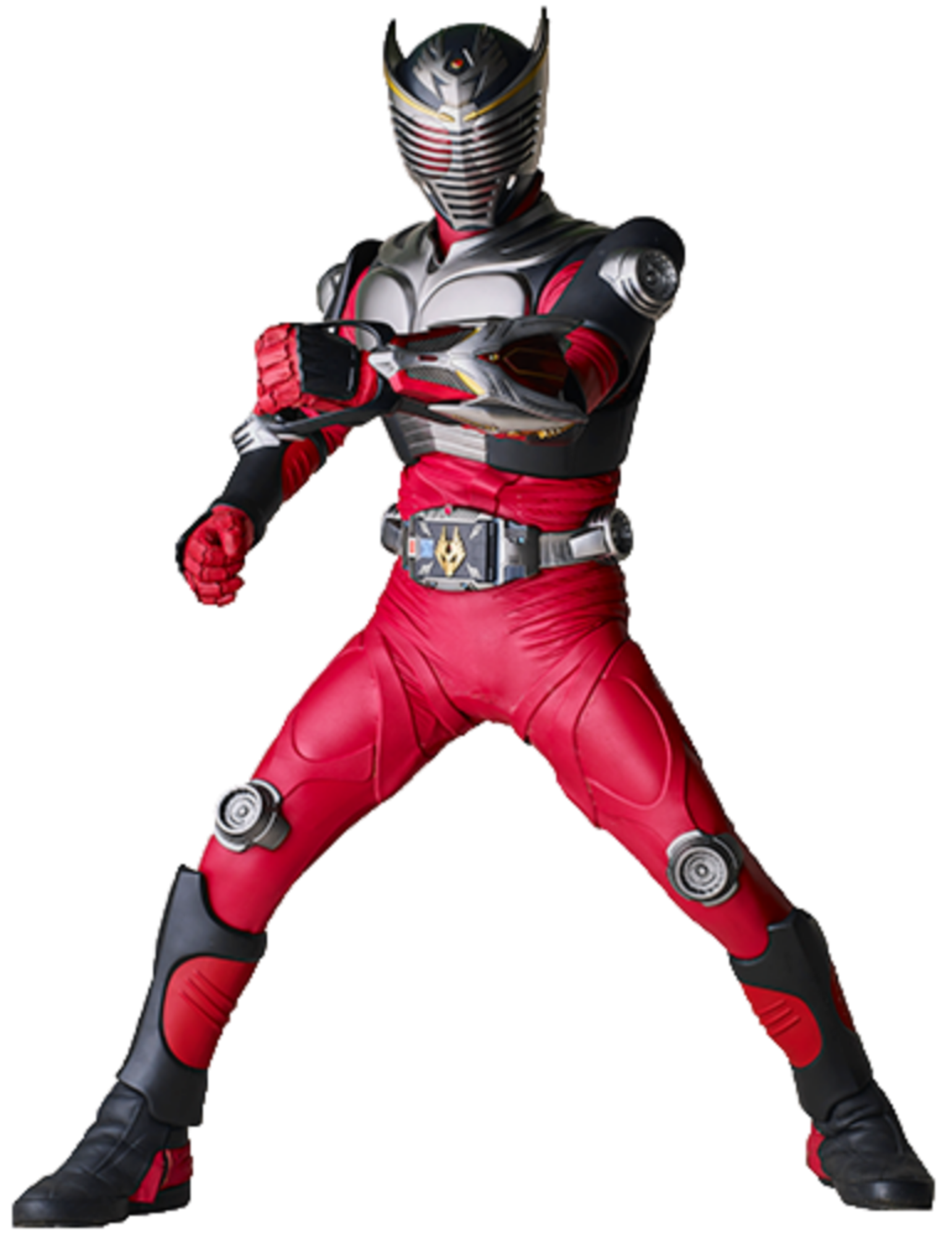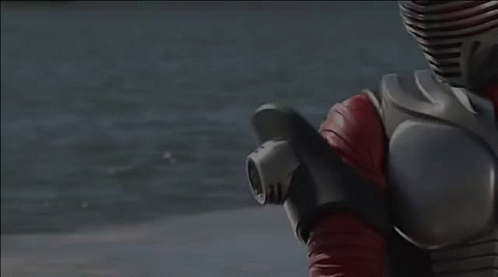Kamen Rider Ryuki
What’s a Kamen Rider?
Kamen Rider is a Japanese superhero series that started way back in the year of 1971. In this series, a man transforms into a bug-themed superhero to fight evildoers while riding a motorcycle. If you’ve seen Power Rangers or anything in that vein, it should sound incredibly familiar. Much like Power Rangers, the “monster/villain of the week”is destroyed using a finishing move. In most cases for Kamen Rider, it’s a flying jump kick named a “Rider Kick”.
Where Does Ryuki Come In?
Overview
Kamen Rider Ryuki is the twelfth entry in the series, airing in 2002. Kamen Rider as a series at this point in time was beginning to focus more on independent story-lines that were isolated to that particular installment. Watching it today was almost like experiencing a time capsule of technology and trends that honestly made it more interesting to watch. Cameras at that point were still playing catch up with emerging technology, and the CG that is present is far more noticeable than it is today. In actuality I didn’t really mind, as it meant that quite a few physical props were still fashioned out of necessity.
Incredibly Simplified Plot
When I found out about the premise for Ryuki, I was honestly shocked given how frequent the core idea has become throughout both media and gaming. Essentially, the thirteen riders that comprise the series are competing in a battle royale in order to obtain the power necessary to grant their one wish. The desire differs between riders, but each uses that as their motivation for joining the fight.
The main character, Shinji Kido, joins in an attempt to halt the fight, however futile that sounds. His reasoning focuses on the fact that as long as the fight continues, innocent bystanders could be hurt. Other riders’ motivations range from wanting immortality, to be recognized as a hero, and simply as a means to fight.
Every rider forms a “contract” with a particular monster, gaining abilities that represent the original monster, in addition to an outfit with similar aesthetic. The monsters the characters form contracts with originate from a “mirror world”, a copy of the everyday one that the characters inhabit. This is tenuous at best, as the monster can deem their contract human as unworthy and kill them if they so choose. Upon forming his contract, Kido gains the powers of Kamen Rider Ryuki as seen below:

When a contract is formed, the rider obtains a deck of cards, known as an
Advent Deck, each of which provides them a certain types of power. This can
include a weapon based on the monster they represent, a shield, an ability, or
a finish move. Finishing moves in this series are referred to as “Final Vents”.
This finishing move is repeated frequently throughout the show as a way to
pad for time hype up the finale of a fight. Below is the rendition as
featured in Ryuki:

Kamen Rider is Like Bacon and Eggs
Regardless of which series in the Kamen Rider universe you first experience, you’ll likely begin to notice the similarities as you watch more of them. However, the earliest of series tend to have a much more prominent lead, with side characters occasionally being focused on for particular story beats. As you near more recent series, the cast as a whole begins to be prominently featured on a regular basis.
With Ryuki, the main character Kido tends to fall in the category of comic relief and moral compass. He’s still technically the poster child of the show, but his big moments are typically saved for instances where either his philosophy is directly challenged, or he grows as a character alongside the stakes for which he must fight.
When compared to older Kamen Riders, the characteristics of the leads from the earlier eras can typically been seen in the foil to the main character. In this case, it would be Ren Akiyama. His style, mannerisms and preferred choice of transit all imitate the stoic and manly characteristics usually shown by leads in previous Kamen Rider series. His motorcycle is full sized, and tends to play most situations extremely straight.
What’s Next
Having finished Ryuki, I decided that my next series will probably be one of the newer ones that have received a western release already, Kamen Rider Zero-One. I’m mainly interested to see how they’ve taken the established concepts from the two series I’ve watched and apply them in a much more modern lens.
While the Ultraman series was the one that got me into Tokusatsu in general, I’m not quite sure if I like how that series has opted to shorten their season length. Without a well though-out vision for where a series installment should go, it can be quite difficult to balance the main plot alongside the involvement of other characters throughout the show in less than 30 episodes. In contrast the Super Sentai series as well as Kamen Rider have continued to have seasons that run for quite some time, typically more than 45 episodes.
Personal Recommendations
If at this point you feel interested in checking out any of the Tokusatsu series, here’s a short list of each that I recommend you check out to test the waters:
Super Sentai
- Kyōryū Sentai Zyuranger (This became the original MMPR)
- Mirai Sentai Timeranger (What became Power Rangers Time Force)
Kamen Rider
- Kamen Rider (Be warned, there’s 98 episodes)
- Kamen Rider Ryuki (Definitely not bias)
Ultraman
- Ultraman ‘66 (The original)
- Ultraman Tiga